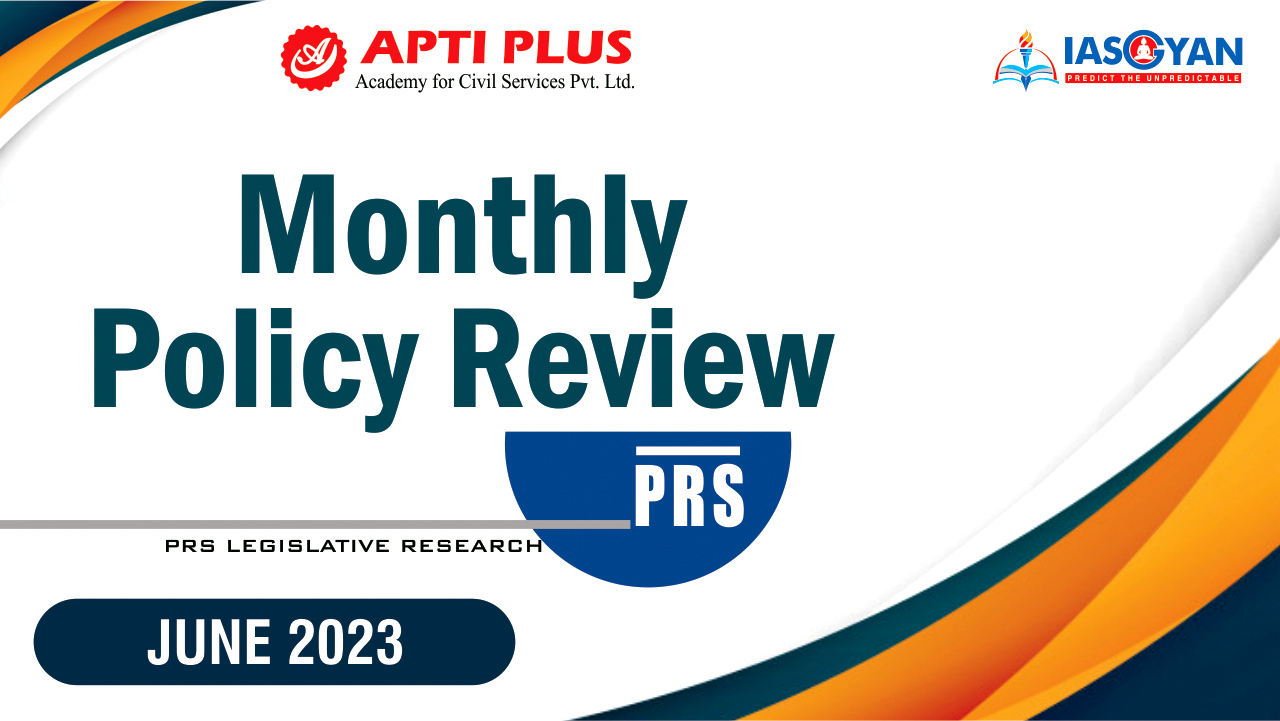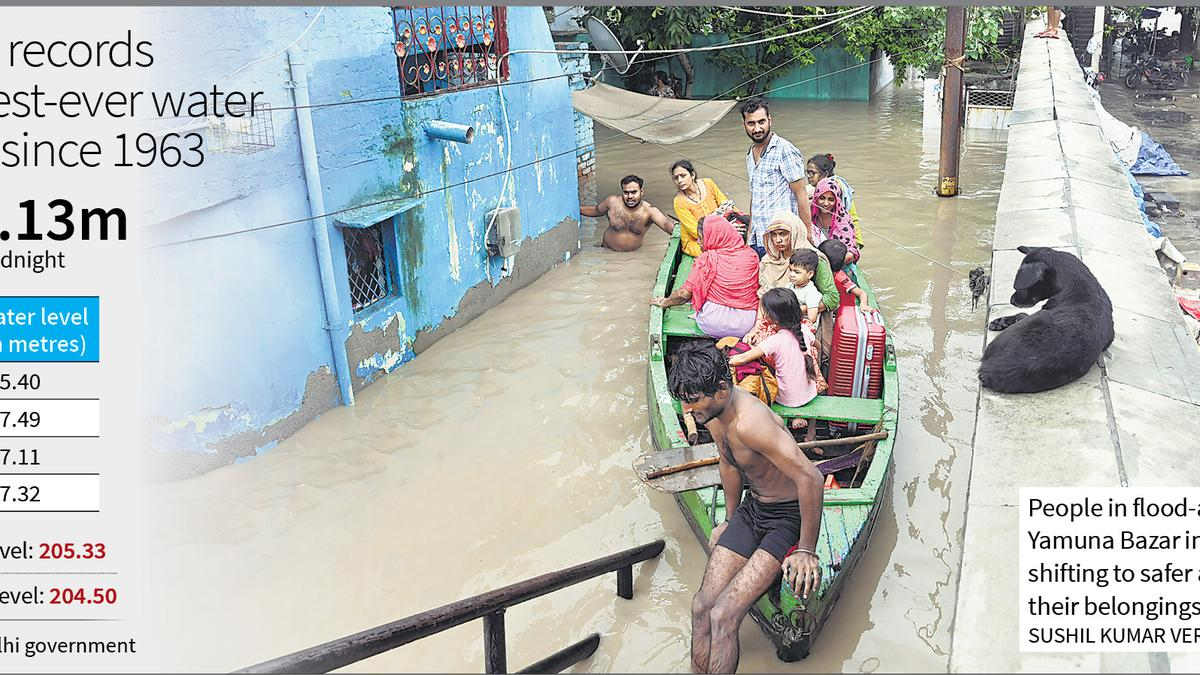Description

Disclaimer: Copyright infringement not intended.
Context
The rising water level of the Yamuna River in Delhi.
Details
- Chief Minister Arvind Kejriwal urges the Centre to prevent further rise in Yamuna water level.
- Yamuna water level reaches a 60-year high, flowing at 208.13 meters, the highest recorded since 1963.
- Urgent evacuation of people living in areas close to the river is advised.
Flooding in Delhi
- Several parts of the city near the Yamuna river, including Monastery Market, Yamuna Bazar, Geeta Ghat, and Majnu Ka Tilla to Wazirabad stretch, experience flooding.
- Over 16,500 people have been evacuated from flood-affected areas by the Delhi government.
- The Delhi government is in the process of evacuating around 41,000 people living close to the river.
- Some residents set up makeshift tents on busy roads, while others are provided accommodation by the Delhi government.
- Irreparable losses are suffered, and farmers lose crops due to flooding.
- Residents face challenges in accessing relief and reaching safer locations.
Rising Water Level and Release from Hathnikund Barrage
- Heavy rain in north India since July 8-9 causes the Yamuna's water level to rise steadily.
- The water released from Hathnikund Barrage decreases from 3.59 lakh cusecs to 1.47 lakh cusecs.
- The reduced water release will take time to affect the river flow in Delhi due to the 36-72 hour travel time.
- The city is situated in an area that is prone to flooding due to its low-lying elevation and proximity to rivers.
- The city's drainage system is not able to cope with heavy rainfall, which can lead to flooding in low-lying areas. This is due to a number of factors, including the lack of maintenance of the drainage system, the illegal construction of buildings in floodplains, and the dumping of garbage in drains.
Strengthening Embankments and Response Measures
- Public Works Department (PWD) Minister Atishi mentions efforts to strengthen embankments to prevent breaches.
- National Disaster Response Force (NDRF) teams are deployed in affected areas.

About Yamuna River
- The Yamuna River is one of the major rivers in India, originating from the Yamunotri Glacier in the Uttarakhand state at an altitude of about 6,387 meters (20,955 feet).
- It is the largest tributary of the Ganges River and plays a significant role in the religious, cultural, and historical context of India.
- It has a total length of approximately 1,376 kilometers (855 miles).
Course and Flow
- The river flows through several states, including Uttarakhand, Himachal Pradesh, Haryana, Delhi, and Uttar Pradesh, before joining the Ganges River.
- Yamuna passes through key cities such as Delhi, Agra, and Mathura, playing a significant role in the cultural and historical heritage of these regions.
- It eventually merges with the Ganges River at Allahabad (Prayagraj), forming a confluence known as Triveni Sangam.
Sacred River
- The Yamuna River holds immense religious significance in Hindu mythology and is considered one of the holiest rivers in India.
- It is believed to be the sister of Lord Yama, the god of death, and is associated with various legends and stories.
- Devotees perform religious rituals, ceremonies, and bathing rituals (snan) in the river, particularly during festivals like Karthik Purnima and Yam Dwitiya.
Pilgrimage Sites
- The Yamuna River is closely associated with several pilgrimage sites, including Yamunotri (its source), Mathura (the birthplace of Lord Krishna), and Vrindavan (associated with Lord Krishna's childhood).
- These locations attract millions of devotees and tourists every year, fostering religious tourism and cultural heritage.
Pollution and Degradation
- The Yamuna River faces significant environmental challenges, including pollution from industrial effluents, sewage discharge, and solid waste dumping.
- High levels of pollutants and contaminants have severely affected the river's water quality, leading to ecological degradation and health concerns.
Conservation Initiatives
- Several initiatives have been undertaken to address the environmental issues faced by the Yamuna River.
- Efforts include the construction of sewage treatment plants, riverfront development projects, and awareness campaigns to promote the conservation and cleanliness of the river.
- Government and non-governmental organizations work together to improve water quality, restore ecological balance, and preserve the river's cultural and historical significance.
|
PRACTICE QUESTION
Q) Discuss the causes and impact of flooding in Delhi, highlighting the role of topography and urban development.What further steps can be taken to address the challenges and minimize flood risks in Delhi? (250 words)
|

https://epaper.thehindu.com/ccidist-ws/th/th_delhi/issues/43394/OPS/GV0BFPCEL.1.png?cropFromPage=true
















